Girl With Funny Glowing Red Hands Civil War
America's Darkest Hour: 39 Haunting Photos Of The Civil War
Scenes from the brutal conflict that killed almost three percent of the American population in four short years.
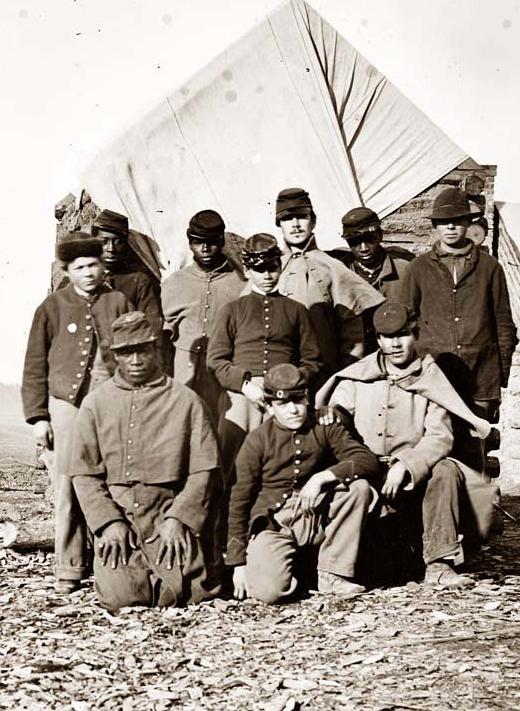
Teenaged soldiers -- both black and white -- of the Union Army. Wikimedia Commons

This photograph, taken circa 1862, was titled "Contrabands at Headquarters of General Lafayette." "Contrabands" was an expression coined by Union General Benjamin F. Butler to describe escaped slaves.

Bodies on the battlefield at Antietam, Maryland in September 1862. Alexander Gardner/Library of Congress via Wikimedia Commons

Lincoln stands on the battlefield at Antietam, Maryland with Allan Pinkerton (the famed military intelligence operative who essentially invented the Secret Service, left) and Major General John A. McClernand (right) on October 3, 1862. Alexander Gardner/Library of Congress
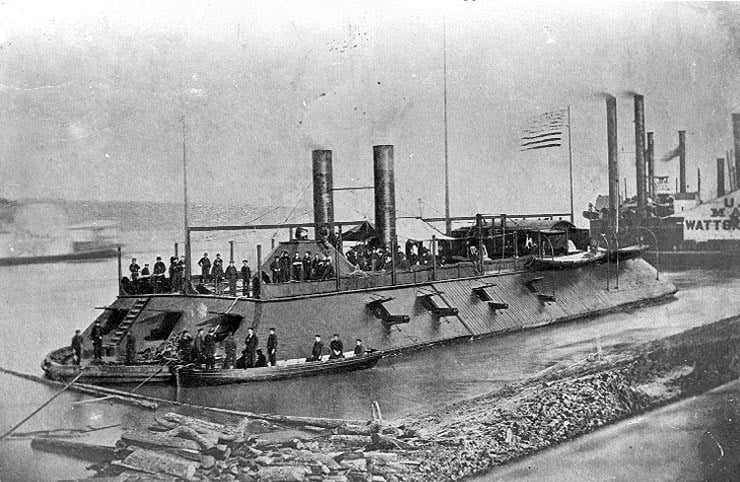
The USS Cairo on the Mississippi River in 1862. U.S. Naval Historical Center

Artillery at Yorktown, Virginia, circa 1862. James F. Gibson/Library of Congress via Wikimedia Commons
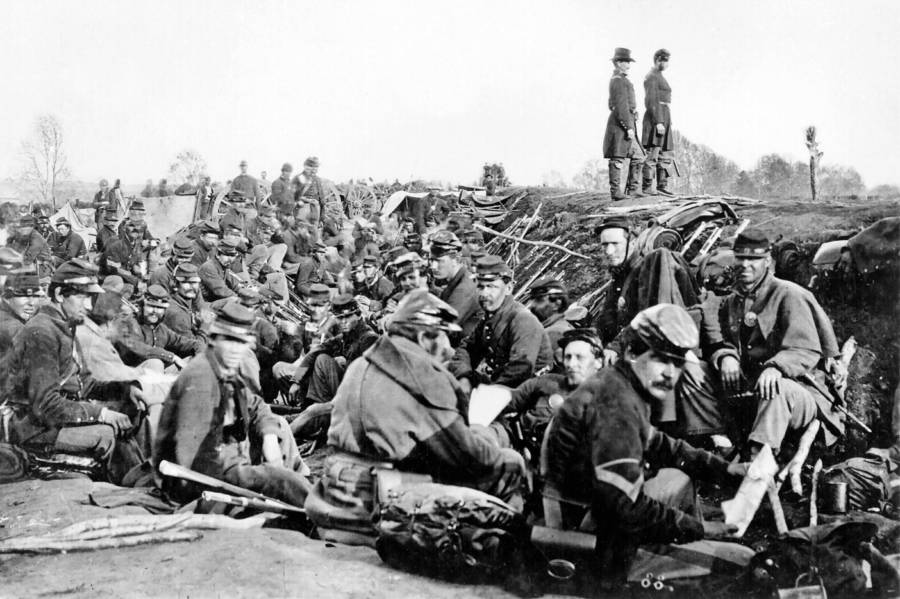
Entrenched along the west bank of the Rappahannock River at Fredericksburg, Virginia, these Union soldiers were about to take part in the pivotal Battle of Chancellorsville, beginning on April 30, 1863. A. J. Russell/National Archives

Confederate President Jefferson Davis. Brady-Handy Photograph Collection/Library of Congress

U.S. President Abraham Lincoln. Alexander Gardner/U.S. Library of Congress via Getty Images

The CSS Atlanta on the James River after Union forces had captured the ironclad Confederate ship in June 1863. Mathew Brady/Library of Congress

African-Americans collect the bones of soldiers killed in battle at Cold Harbor, Virginia, June 1864. John Reekie/Library of Congress
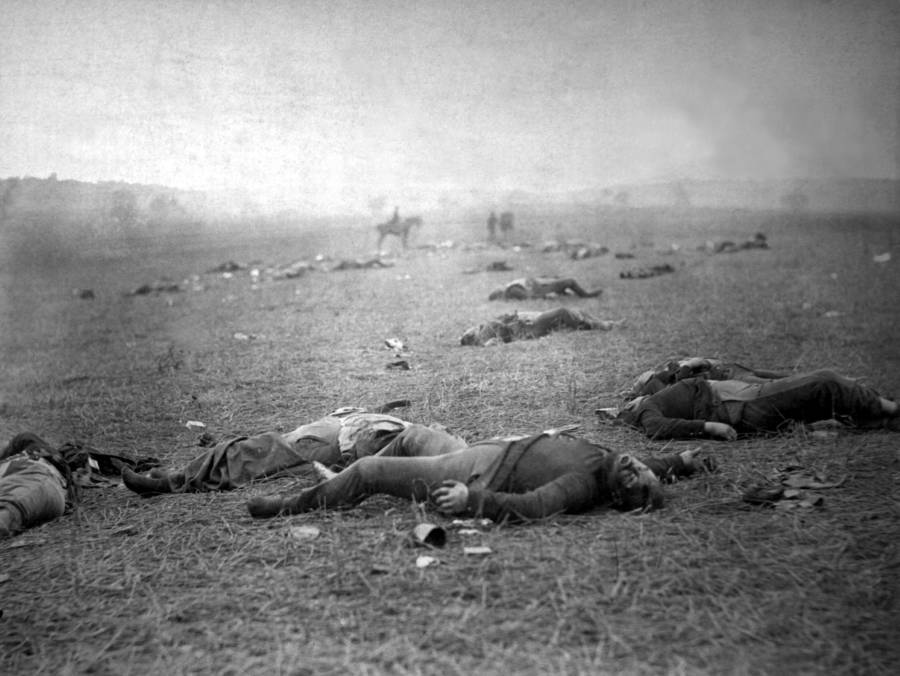
Partially titled "A harvest of death," this photo depicts just a few of the fallen soldiers at Gettysburg, Pennsylvania following the historic battle there in July 1863. Timothy H. O'Sullivan/Library of Congress
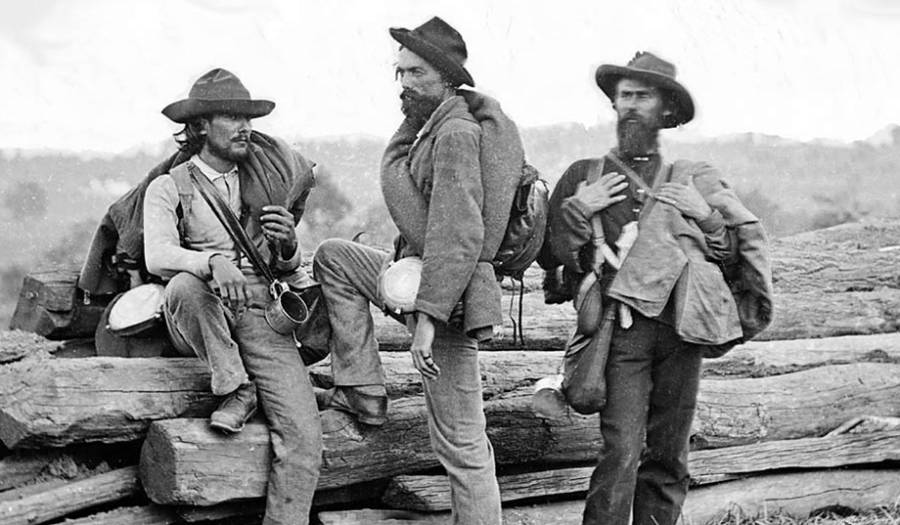
Three Confederate soldiers who were captured at Gettysburg, summer 1863. Library of Congress
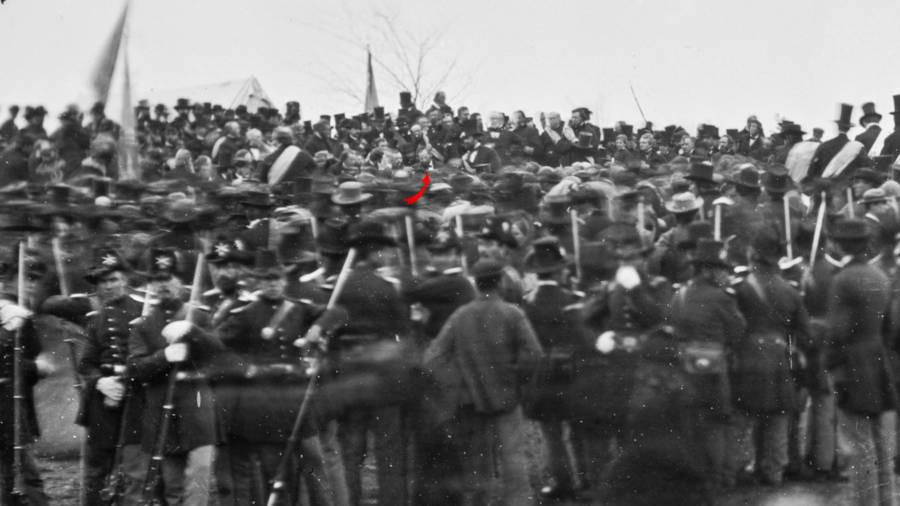
Abraham Lincoln (indicated by red arrow) arrives at the dedication of the Soldiers' National Cemetery in Gettysburg, Pennsylvania on November 19, 1863, not long before delivering his Gettysburg Address. Library of Congress via Wikimedia Commons

Crewmembers of the USS Wissahickon standing by the ship's gun, circa 1863. U.S. Naval Historical Center

Union General Phil Sheridan. Sheridan gave the photographer the hat he is wearing here, but workmen would later steal it from a trunk in the photography studio's cellar.

Confederate dead at the Battle of Spotsylvania in Virginia, May 1864. Wikimedia Commons
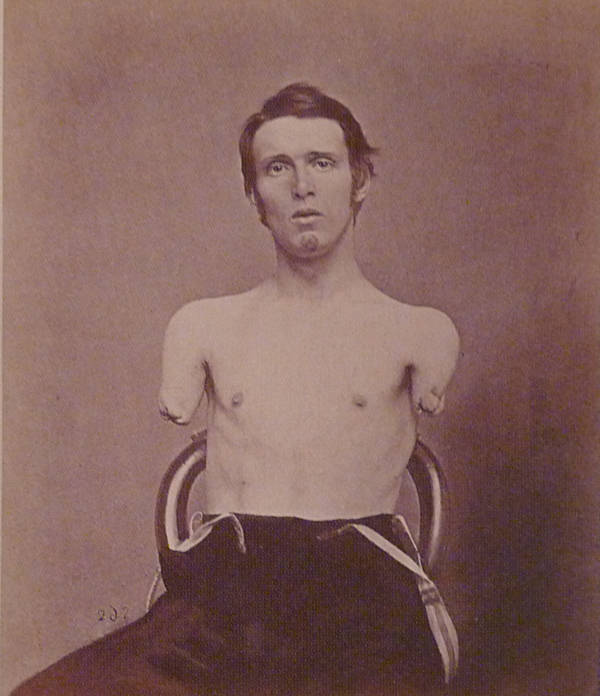
On June 18, 1864, a cannon shot took both arms of Alfred Stratton. He was just 19 years old. Overall, one in 13 Civil War soldiers became amputees. Mütter Museum

Union soldiers from Company D, U.S. Engineer Battalion, pose during the siege in August 1864 in Petersburg, Virginia. Library of Congress/Getty Images
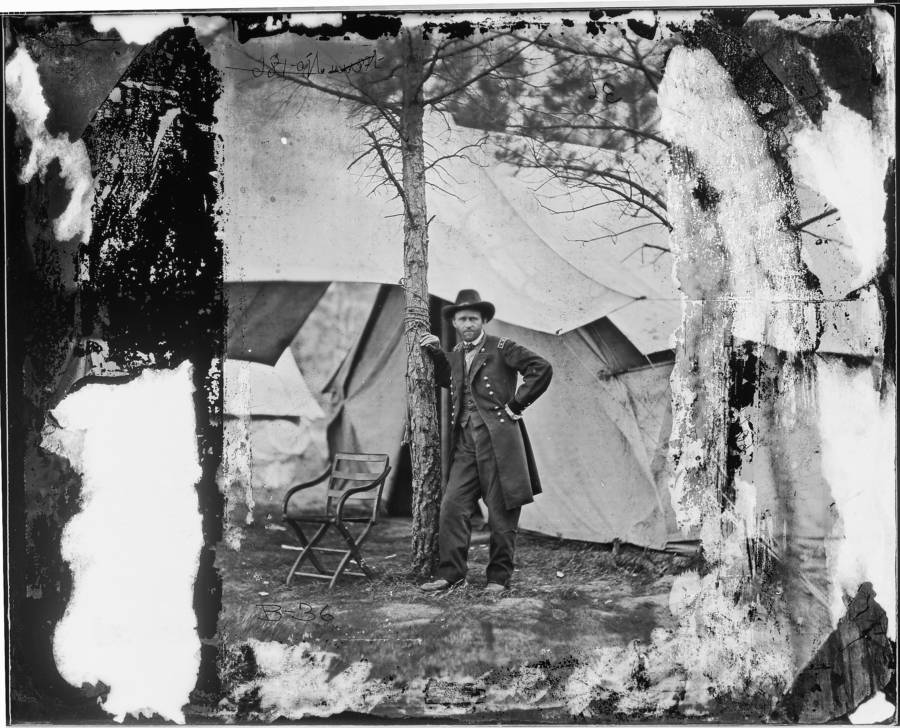
U.S. General Ulysses S. Grant in City Point, Virginia, August 1864. U.S. Library of Congress/Getty Images
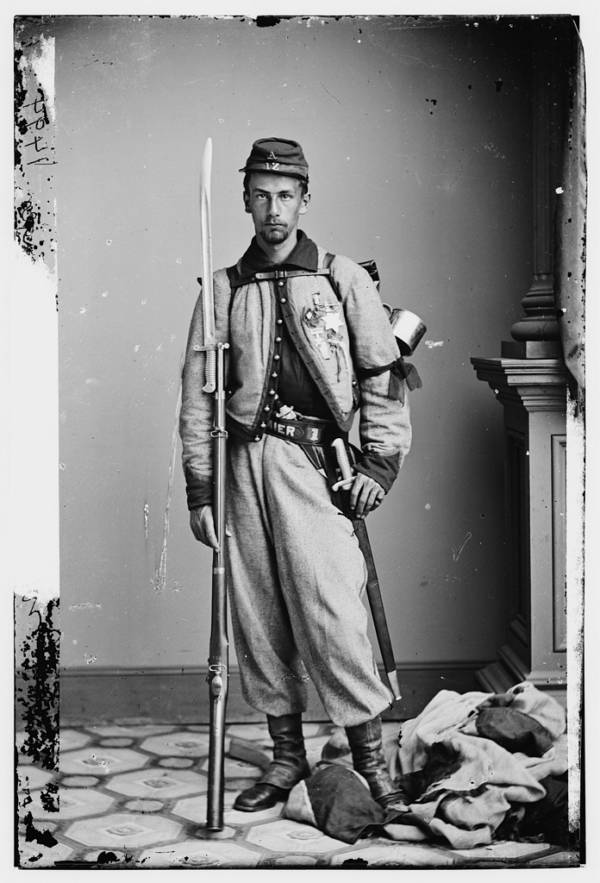
Union soldier Francis E. Brownell, wearing a Zouave uniform, with a bayoneted musket. The Medal of Honor recipient has a black crape tied to his left arm in mourning for Col. E. E. Ellsworth. Brady-Handy Photograph Collection/Library of Congress
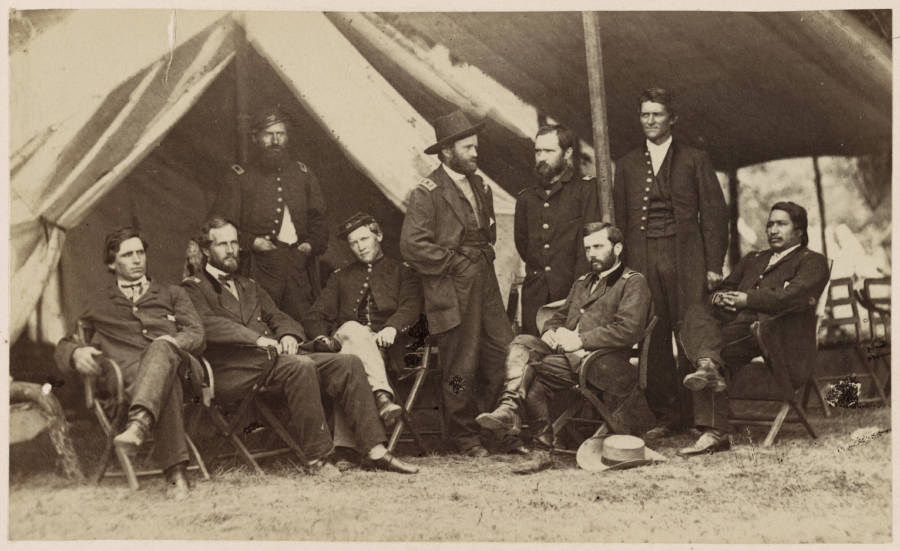
U.S. General Ulysses S. Grant (center) and his staff pose in the summer of 1864 in City Point, Virginia. U.S. Library of Congress/Getty Images

Union officers and enlisted men stand around a 13-inch mortar, the "Dictator," on the platform of a flatbed railroad car in October, 1864 near Petersburg, Virginia. David Knox/Library of Congress/Getty Images
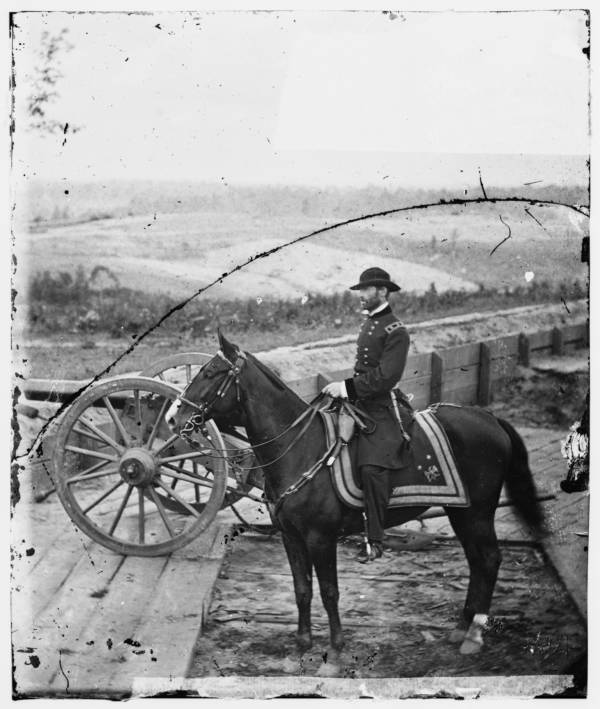
Union General William T. Sherman sits on a horse at Federal Fort No. 7 September-November, 1864 in Atlanta, Georgia. George N. Barnard/U.S. Library of Congress/Getty Images

The Ponder House stands shell-damaged in Atlanta, Georgia, September-November 1864. George N. Barnard/U.S. Library of Congress/Getty Images
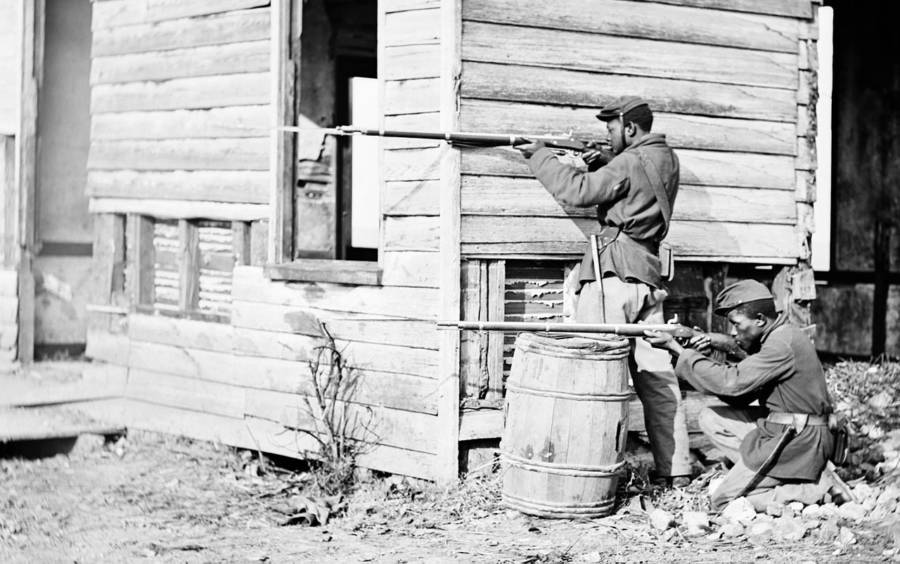
African-American Union troops at Dutch Gap, Virginia in November 1864. Library of Congress via Wikimedia Commons
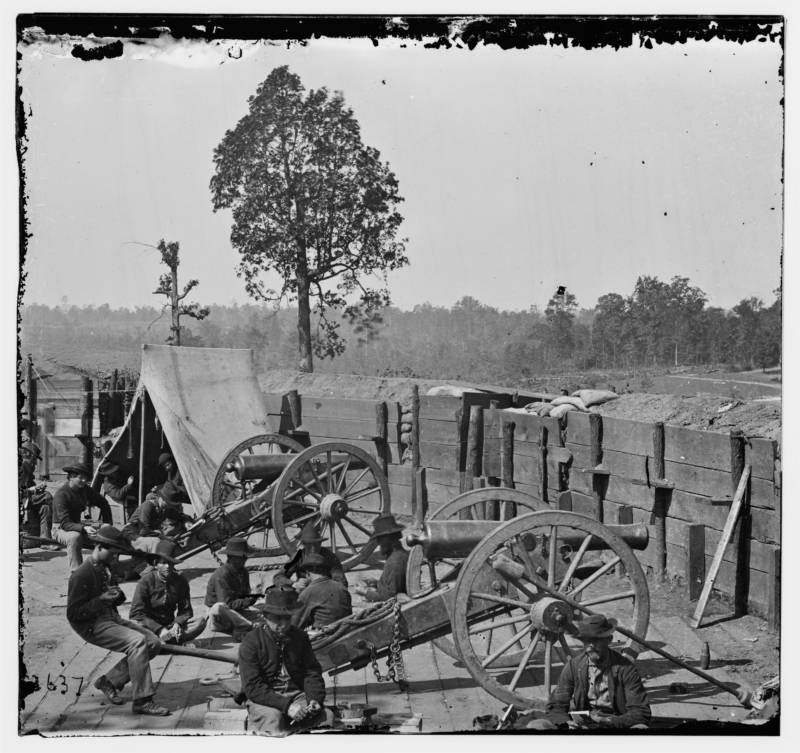
Union soldiers sit by the guns of a captured fort in 1864 in Atlanta, Georgia. George N. Barnard/U.S. Library of Congress/Getty Images
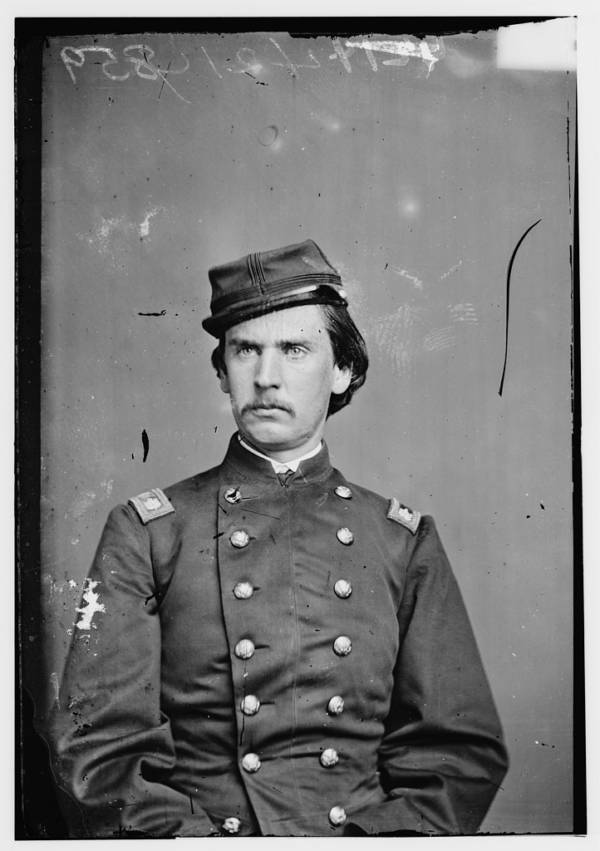
Union Colonel E. Olcott. Brady-Handy Photograph Collection/Library of Congress

Soldiers sit in trenches near Petersburg, Virginia, circa 1864. Library of Congress/Getty Images

A Union wagon train enters Petersburg, Virginia in April, 1865. John Reekie/U.S. Library of Congress via Getty Images
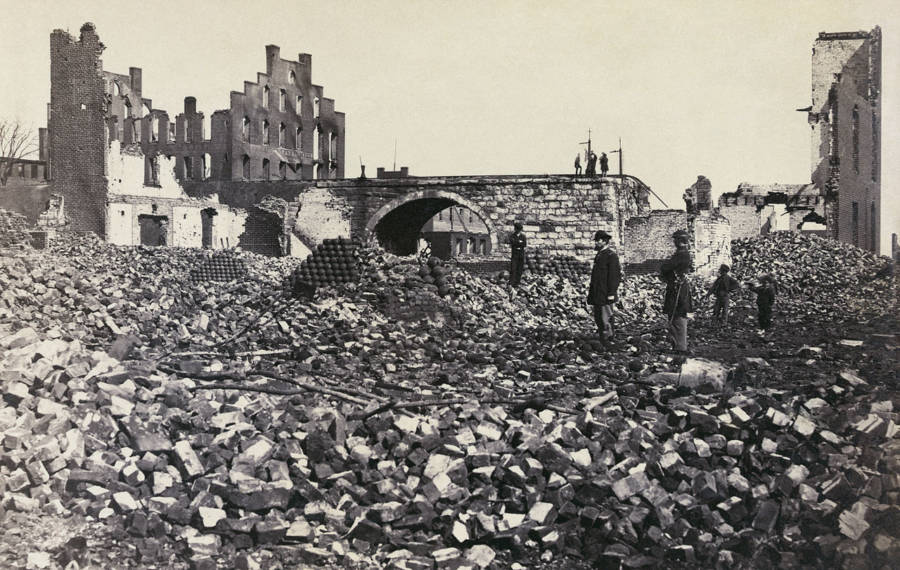
The ruins of the Confederate capital of Richmond, Virginia in April 1865. Andrew J. Russell/Wikimedia Commons
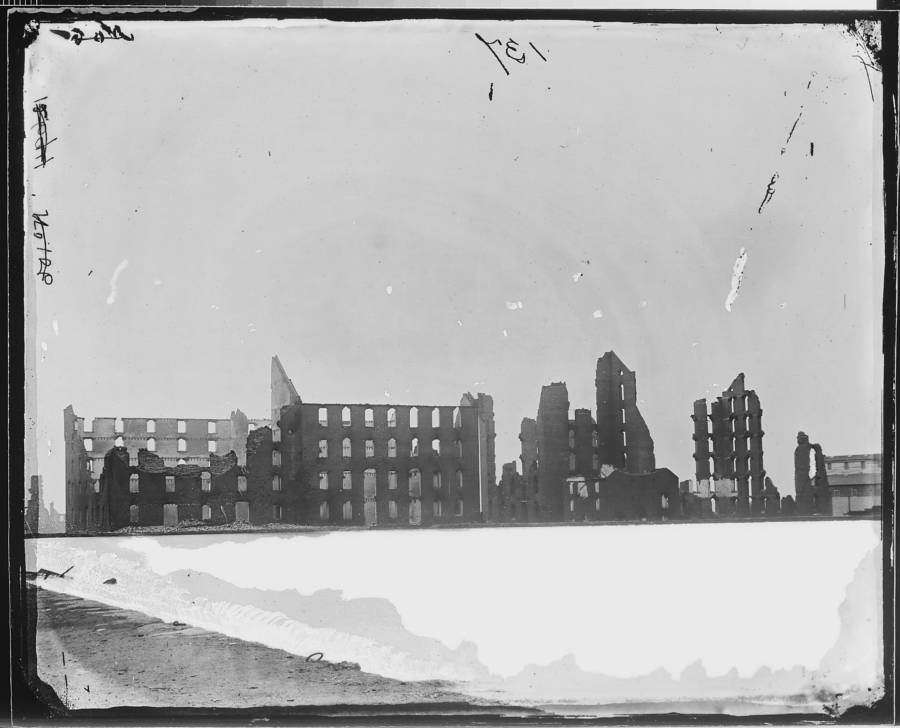
The ruins of Haxalls (or Gallego) Mills in Richmond, Virginia, April 1865. U.S. National Archives/Getty Images
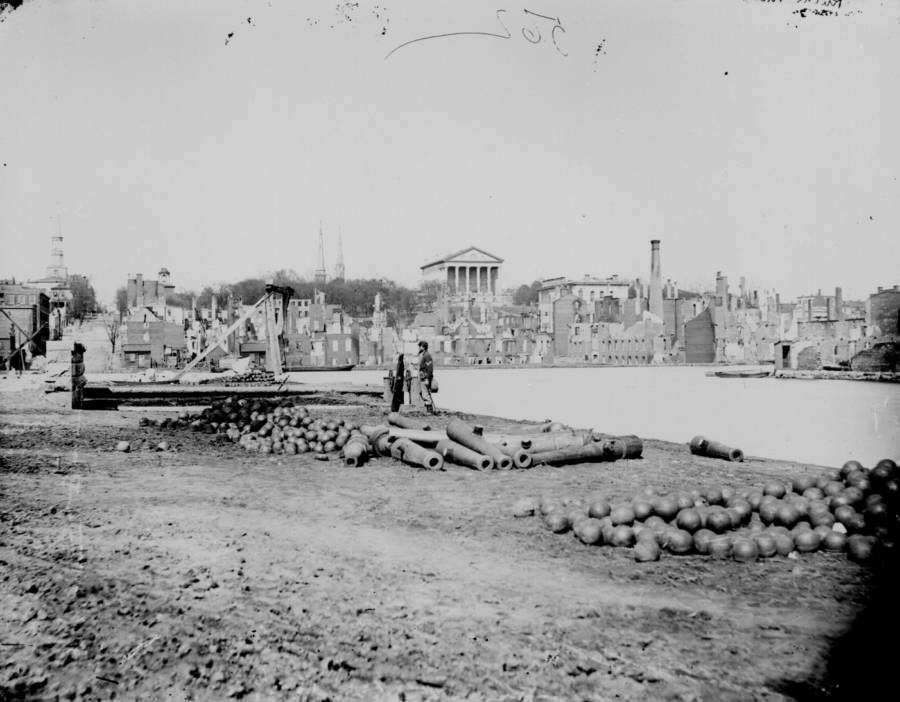
Ruins stand in front of the Confederate Capitol, circa 1865 in Richmond, Virginia. U.S. Library of Congress/Getty Images

Confederate Major Gihl. Brady-Handy Photograph Collection/Library of Congress
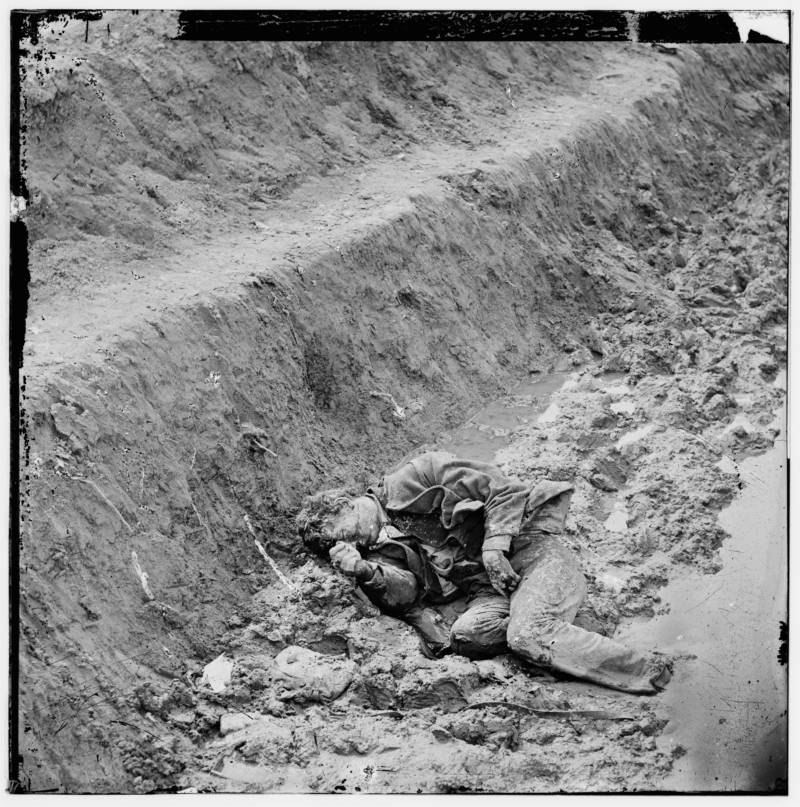
The body of a dead Confederate soldier lies in a trench at Fort Mahone on April 3, 1865 in Petersburg, Virginia. U.S. Library of Congress/Getty Images
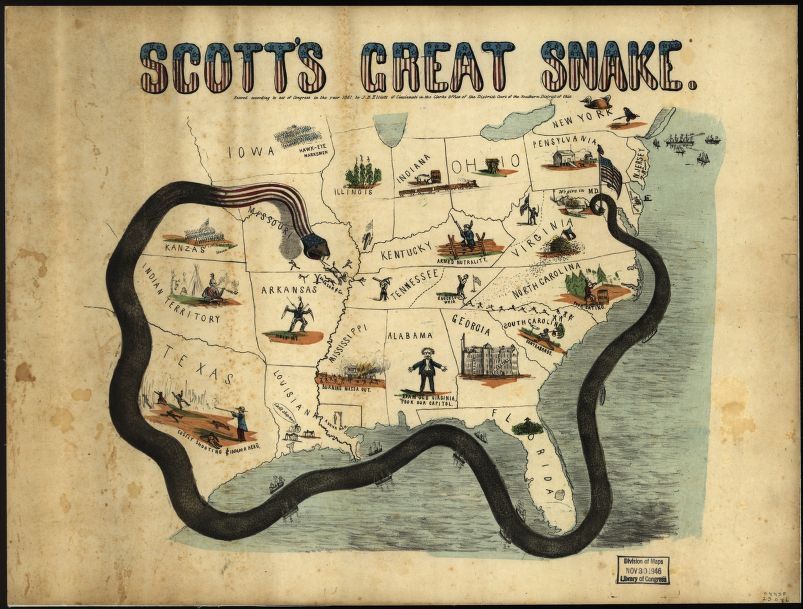
The Anaconda Plan consisted of two main objectives: Set up a naval blockade of the Atlantic and Gulf of Mexico ports that were controlled by the Confederacy, and transport roughly 60,000 Union troops in 40 steam transports down the Mississippi river. They would capture and hold forts and towns along the way. Library of Congress

The ruins of the State Arsenal and Richmond-Petersburg Railroad Bridge are seen in 1865 in Richmond, Virginia. Alexander Gardner/U.S. Library of Congress/Getty Images

Soldiers wait outside the court house in Appomattox, Virginia as the higher-ups work out the official terms of surrender in April 1865. Timothy H. O'Sullivan/Library of Congress
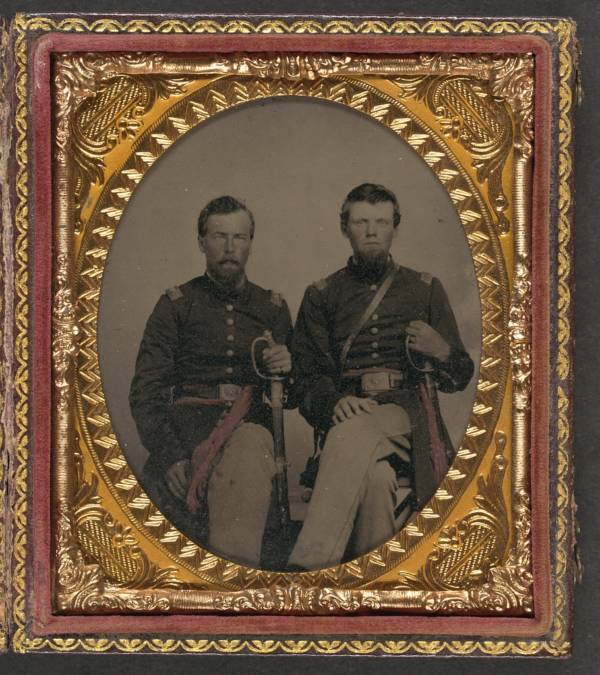
Two unidentified soldiers in Union captain's uniform and lieutenant's uniform, holding foot officers' swords, wearing frock coats, over-the-shoulder belt for sword attachment, and red sashes. Liljenquist Family Collection of Civil War Photographs/Library of Congress
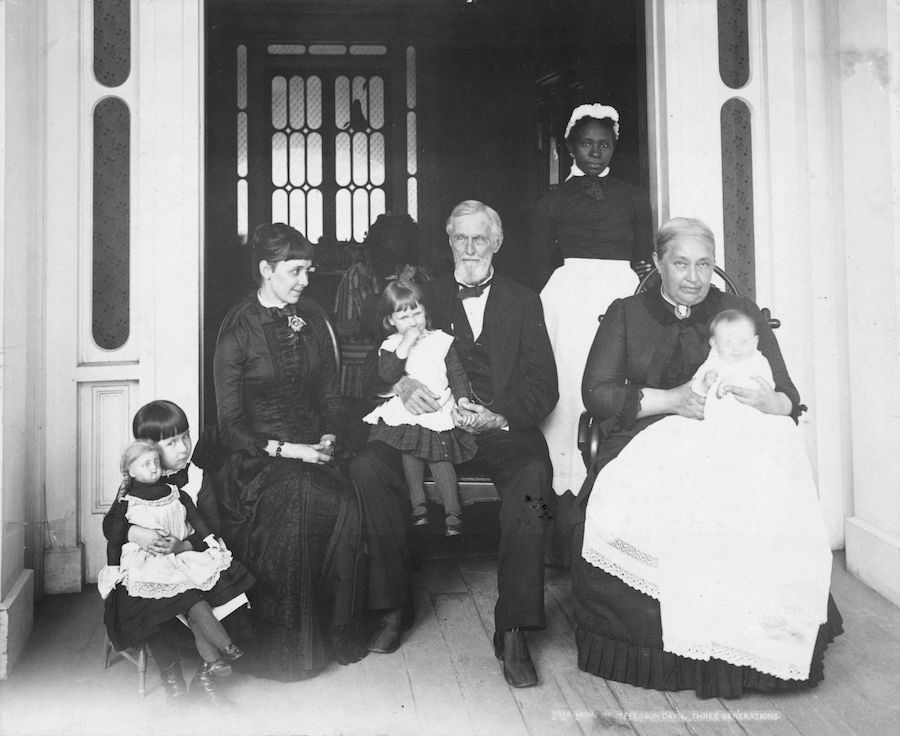
Taken sometime in 1884 or 1885, Davis's family is pictured here in Beauvoir, Mississippi. From Left to Right:: Varina Howell Davis Hayes [Webb] (1878-1934), Margaret Davis Hayes, Lucy White Hayes [Young] (1882-1966), Jefferson Davis, unidentified servant, Varina Howell Davis (His wife), and Jefferson Davis Hayes (1884-1975), whose name was legally changed to Jefferson Hayes-Davis in 1890.
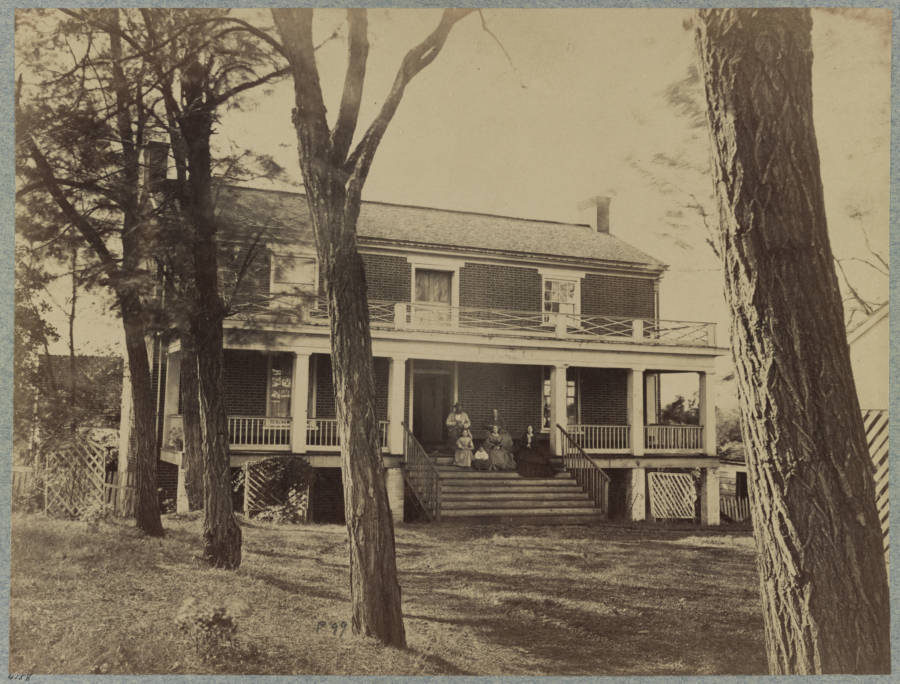
Wilmer McLean and his family sit on the porch of his house, where Confederate General Robert E. Lee signed the terms of surrender to Union General Ulysses S. Grant on April 9, 1865 in Appomattox Court House, Virginia. Timothy H. O'Sullivan/U.S. Library of Congress via Getty Images
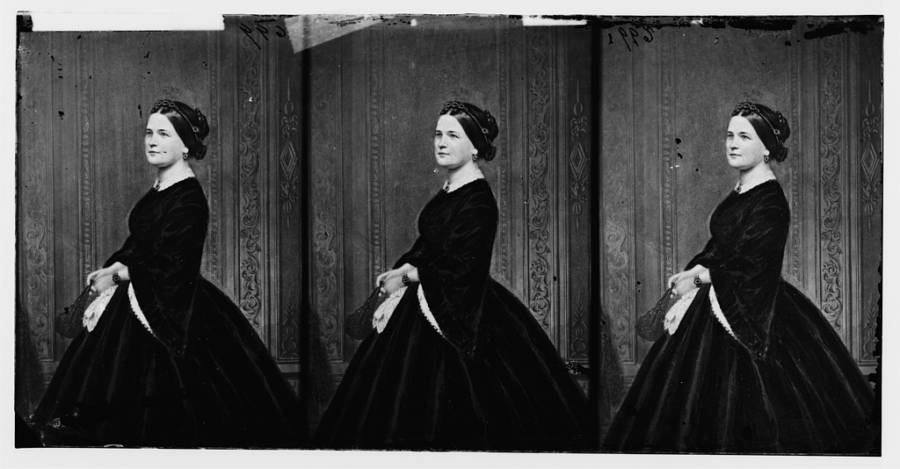
First Lady Mary Todd Lincoln, circa 1860-1865. Brady-Handy Photograph Collection/Library of Congress
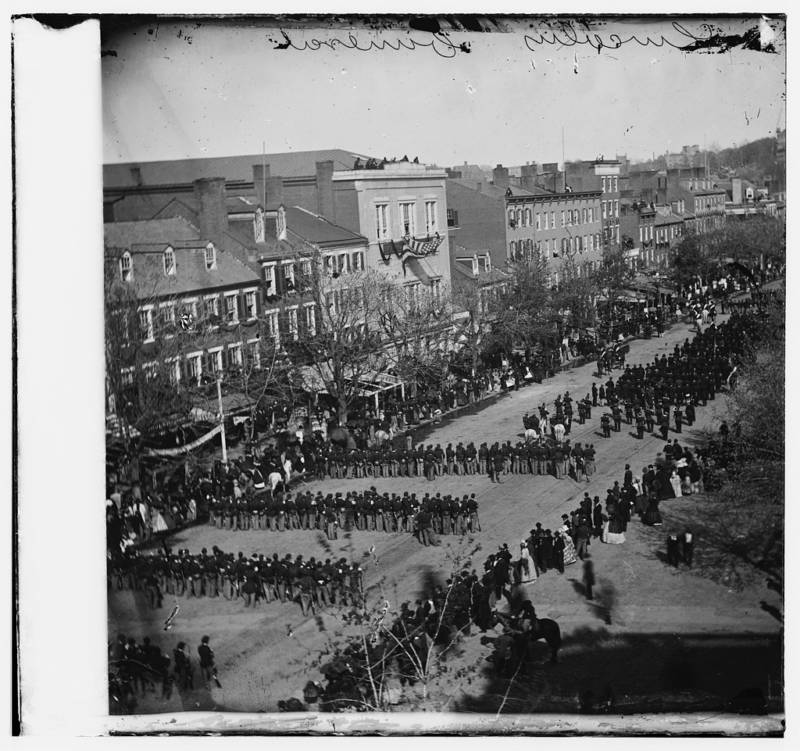
The funeral procession for U.S. President Abraham Lincoln slowly moves down Pennsylvania Avenue in Washington, D.C. on April 19, 1865, five days after he was shot by Confederate sympathizer John Wilkes Booth and ten days after the Confederate surrender at Appomattox Court House, Virginia effectively ended the war. Library of Congress
America had never seen anything like the Civil War before.
Between 1861 and 1865, approximately 750,000 soldiers and 50,000 civilians died while another 250,000 soldiers were seriously wounded. For comparison, every soldier fighting in the Civil War was 13 times more likely to die in the line of duty than were American soldiers fighting in the Vietnam War.
In total, eight percent of all white males aged 13 to 43 living in America at the dawn of the Civil War died during the conflict -- that's approximately 2.5 percent of the total American population. With combined civilian and military casualties estimates ranging as high as a million, the Civil War remains the single deadliest event in American history.
In fact, more American servicemen died during the Civil War than in all other U.S. wars combined.
For four deadly years, the country endured not only its bloodiest and most vicious military conflict, but also some of its cruelest racial hatred. Adding to the already immense heap of skulls, Confederates used disease, starvation, exposure, and outright execution to kill hundreds of thousands of former slaves during the war, a figure not included in death toll estimates thanks to a deliberate lack of record keeping.
The end of all this bloodshed began when Union General Ulysses S. Grant relentlessly assaulted Petersburg, Virginia for nine months in hopes of destroying Confederate General Robert E. Lee's army, who eventually capitulated in April 1865.
With the bulk of the Confederate military strength gone, the end of the war was imminent. In May, Union troops in Georgia captured Confederate President Jefferson Davis -- who promptly almost got away.
The leader of the unit that captured Davis became distracted and left his prisoner in the hands of his adjutant. That man was nearly fooled into letting Davis, who'd slipped into disguise as an old woman, escape. But when troops noticed the old woman's boots and spurs, Davis was caught.
Davis spent the next two years in prison, and the country spent the ensuing decades trying to rebuild from the conflict that very nearly tore it apart.
Fascinated by these staggering Civil War photos? Next, read about the Civil War-era cannonballs that washed up on a South Carolina beach, before checking out the five women who took matters into their own hands during the Civil War.
Source: https://allthatsinteresting.com/civil-war-photos
0 Response to "Girl With Funny Glowing Red Hands Civil War"
Post a Comment